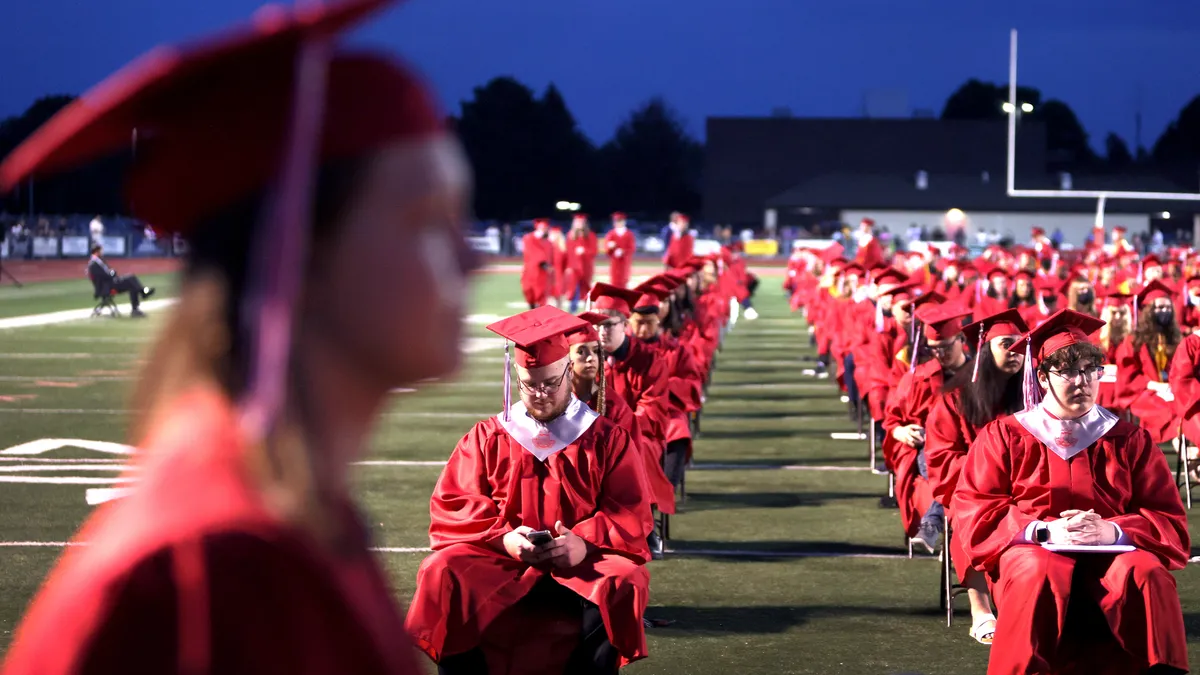Dive Brief:
-
The nation's graduation rate rebounded in 2021-22 after the onset of the COVID-19 pandemic disrupted a decade of steady growth, according to a report released Thursday by the National Center of Education Statistics.
-
Between the 2011-12 and 2019-2020 school years, the average high school graduation rate increased between 0.5 to 1.4 percentage points every year. However, during the first full year of the pandemic, from 2019-20 to 2020-21, the average graduation rate fell by 0.4 percentage points.
-
It then ticked back up by 2021-22, the first full in-person school year for many schools, to 2019-20 levels at 87%, NCES data shows. Overall, that still represents an increase since 2011-12, when the graduation rate was 80%.
Dive Insight:
The national data confirms suspicions that graduation rates fell during the pandemic. However, NCES could not confirm, based on the data, whether the pandemic was the cause of the decline.
The temporary decrease in high school graduation rates at the national level reflects a trend at the state level showing graduation rates may have not been impacted as drastically as experts feared. Many states had increases in their 2021-22 high school graduation rates when compared to the year prior.
National data shows graduation rates had essentially "recovered by 2021-22," said Véronique Irwin, education research analyst for NCES, in an email.
The rate of high school graduates immediately enrolling in higher education institutions after receiving their diplomas in 2022 also stayed relatively level when compared to a decade earlier in 2012 and to a year prior in 2021. In 2022, about 45% of high school completers immediately enrolled in four-year institutions, and 17% immediately enrolled in two-year institutions.
“We continue to witness important shifts in enrollment — and in so many other facets of the educational experience for American families," said NCES Commissioner Peggy Carr in a statement on Thursday, adding that the data was "powerful," and that the nation "has worked to respond to and learn from the pandemic."
During the same pandemic school years when graduation rates dipped and then rebounded, states had also mobilized to ease graduation requirements for students, especially those who were already on track to graduate when COVID-19 hit. Measures included waiving course requirements or scaling back on community service and internship requirements.
However, a survey released in 2022 by YouScience also showed that 75% of students who graduated high school between 2019 and 2022 said they were only moderately, slightly or not prepared at all to make college or career decisions after receiving their diplomas.
And a separate nationally representative survey of schools released by NCES in March showed only 47% of public schools rated themselves as doing a "very good" or "excellent" job of preparing students for college. A greater percentage said they did a "good" or better job at preparing students for the workforce (86%) than for college (77%).















